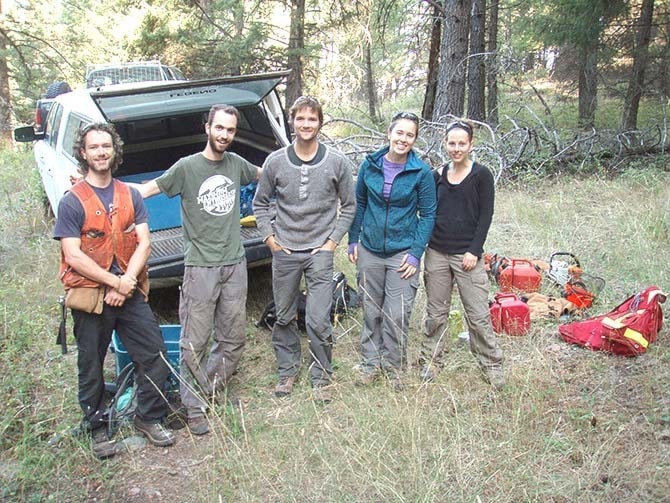The clues to the history of our local forests are there, waiting to be read.
Greg Greene, a University of British Columbia PhD student from Vancouver, is studying dendrochronology, or, what tree rings can tell us about forest history in the Rocky Mountain Trench.
Greene spent 10 weeks working in the Trench this summer. His field work included collecting and measuring samples of tree rings, fire scars and stand densities. He will analyze the results this winter.
"I'm looking for evidence of the historic fire regime and stand growth dynamics," Greene said.
Greene's project encompasses a lot more than the field measurements.
He's working with Randy Harris, team leader of the Rocky Mountain Trench Ecosystem Restoration Program, to develop an overview of in-growth over the last 60 years.
"Greg is orthorectifying photo coverage of the Rocky Mountain Trench based on 1951 air photos," Harris said. "That will give us a true image of how much forest coverage the Trench had back then, and how fast it is encroaching into grasslands."
The data will show how much open forest and grassland has been lost over time.
"Ranchers and hunters know grazing ground has been reduced considerably," Harris said. "But data shows it's not a straight-across trade of 'pasture for productive forest'—it's a trade from pasture to stagnant forest."
A forest becomes stagnant when it reaches too many stems per hectare—when it gets too dense for any trees to thrive.
“We have examples of trees that haven’t grown in 20 years,” Harris said. “It’s common in stands of more than about ten thousand stems per hectare.”
Such stands, Harris said, are the perfect candidates for the Trench ER Program, which is all about removing in-growth and restoring grasslands.
“Trench ER uses a combination of mechanical treatments and prescribed burns to restore grassland and open forest landscapes,” Harris said. “We are studying the results of our treatments over time to ensure we’re going the right direction.”
This year, Greene was impressed to have found so much evidence of historic fires throughout the valley bottom of the Rocky Mountain Trench.
“Considering the study area is in the most populated areas of the Trench, I feel fortunate to have found as much evidence of historic fires throughout the valley bottom as we did,” Green said. “Everywhere we sampled—from the Montana border in the south to Skookumchuck in the north—there was a very high presence of ‘fire-scarred’ trees.
“This abundant evidence, obtained primarily through the stumps of trees that were logged in the early 20th century, speaks to how prolific low- and moderate-severity fires were throughout the valley bottom before fire exclusion policies were implemented.
“We believe that the influx of small trees in the absence of fire can negatively affect the growth rates of their larger, older parents,” Greene said. “Results from this year’s study will provide us with evidence as to whether or not this theory holds true.
“Regardless of the outcome, it remains true that the dense forests of unhealthy, stagnant trees throughout the valley bottom of the Rocky Mountain Trench are both unproductive for timber purposes, and pose a high fire risk to the communities near them.”
The three-year project is being funded through a grant from the Natural Sciences and Engineering Research Council of Canada and the Rocky Mountain Trench ER Program and is sponsored jointly by the Rocky Mountain Trench Society and the University of British Columbia, Forest and Conservation Sciences department.
